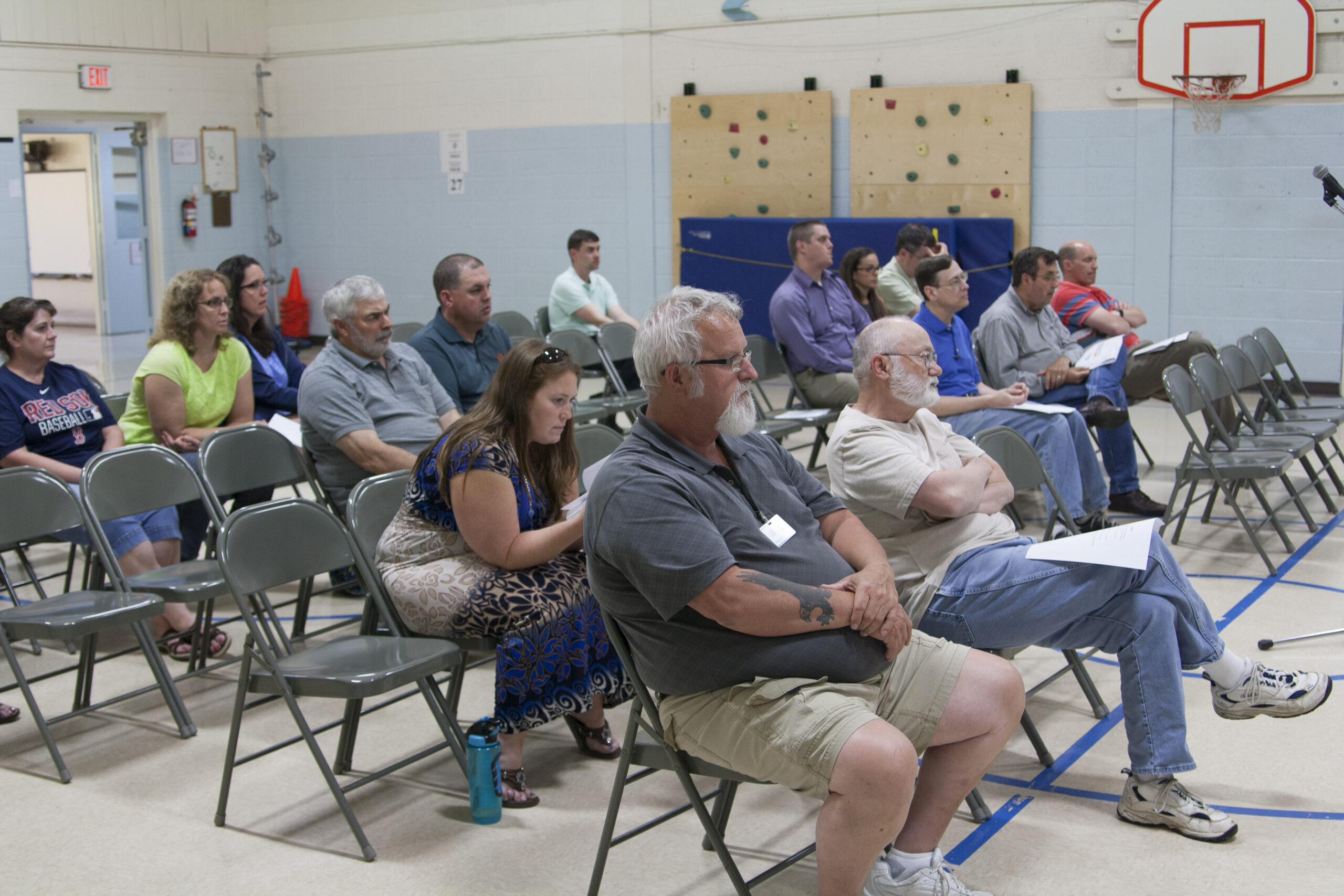
PRESQUE ISLE, Maine — In case the district doesn’t receive state grant funding for a new school, SAD 1 officials are continuing efforts to reduce the school district’s footprint by considering the pruning of older facilities and reorganizing students in a way that’s more cost effective.
“As it is, we have more square footage to educate kids than we need,” Clinton Deschene, SAD1 business manager, told a group of about 20 residents gathered Thursday evening at Pine Street Elementary School. “The problem is the kids are in the wrong place. Pine Street is packed to the gills, but the middle school and the high school have room.”
Student enrollment fell by more than 15 percent in the last decade to around 1,800 students today, and that’s on track to decline to less than 1,600 by 2023, according to district estimates.
Buildings also are in need of repair and maintenance, including Pine Street Elementary which needs renovations and a new roof, which school officials have estimated will cost more than $1.8 million.

Members of the community gathered at Pine Street Elementary School on Thursday evening to hear an update from the SAD 1 Strategic Planning Committee on current plans to reduce the district’s footprint presented by SAD 1’s business manager Clinton Deschene. (Joshua Archer)
The school district created a Strategic Planning Committee last year to come up with ideas to address issues concerning the district’s facilities and student population.
Thursday’s meeting was called to present some of the committee’s ideas. If the district does not get funding for a new school, Deschene said the panel is suggesting splitting the high school into two with a designated area just for grades 6 through 8 and another area just for grades 9 through 12.
The middle school would become an elementary school, housing students in pre-kindergarten through grade 5 who currently attend Zippel and Pine Street. Pine Street would close and Zippel would be utilized as space for administration and adult education.
“The strategic committee has told us they think that running Pine Street is a bad idea, not an efficient continued use for the district,” said Deschene, in an interview after the meeting.
SAD 1 has applied for two separate school construction funding programs with the Maine Department of Education.
One of the applications is for the MDOE’s newest round of school construction grants that will fund new schools in districts with the most need. The other is for the Integrated Consolidated 9-16 Educational Facility Pilot Project, a new program under the LePage administration that sought proposals from districts to create a “9-16” regional high school that incorporates career, technical and higher education.
The DOE is expected to announce the recipients for both grant programs in February.
If the school district does get get awarded state funding “then all the options are back on the table and we don’t know where we’ll end up,” Deschene said. “And that’s why the strategic committee said stop waiting until February to come up with an alternative plan.”
The committee, made up of administrators, teachers, school board members, city council members and members of the public, wants to move forward so the district can present a plan to the community so residents can start making decisions, Deschene said.
The plans presented at Thursday’s discussion will be available on the district’s website within a week, he said.







